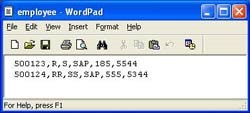When it comes to choosing an integration platform-as-a-service (iPaaS) solution, Boomi vs Mulesoft are two of the most popular options on the market. Both solutions offer powerful features and capabilities for data integration, application integration, and B2B/EDI integration, but there are key differences that set them apart. In this article, we’ll take a detailed look at the key differences between Boomi and Mulesoft, helping you determine which solution is best for your organization’s needs.
Boomi Overview
Boomi is a cloud-based iPaaS solution that offers a unified platform for connecting and integrating data and applications. Boomi’s integration platform is designed to be easy to use and quick to deploy, making it a popular choice for small and mid-sized businesses. Boomi supports a wide range of data sources and applications, including on-premise and cloud-based systems, and offers a comprehensive set of integration tools, including data mapping, data transformation, and data quality capabilities.
Learn more about Boomi
Mulesoft Overview
Mulesoft is a leading iPaaS solution that provides a comprehensive platform for connecting and integrating applications, data, and APIs. Mulesoft offers a wide range of integration tools and capabilities, including data mapping, data transformation, API management, and a robust set of security features. Mulesoft’s platform is designed to be highly scalable and can handle large-scale integration projects, making it well-suited for enterprise-level organizations.
Learn more about MuleSoft
Read More


